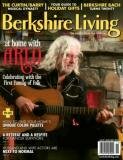
MUSIC REVIEW: Herbie Hancock at Tanglewood
Classical Music
At Large
Other
TANGLEWOOD
Ozawa Hall
Herbie Hancock
August 9, 2010
Ozawa Hall
Herbie Hancock
August 9, 2010
(LENOX, Mass., August 10, 2010) – The digital lava lamp said it all.
All the while he has carved out a place as one of the most popular and successful jazz musicians of the last half century, Herbie Hancock has made a career of infuriating fans and jazz lovers alike. And in his performance at Tanglewood’s Ozawa Hall last night, he was no different.
Give him credit for trying to touch many of the bases of an eclectic-to-the-point-of-musical-whiplash body of work, spanning post-bop, fusion, hip-hop, soundtracks, pop, and pop-into-jazz.
And give him credit for paying lip service to the potential for cross-cultural musical collaborations to bring people together and to help break down the artificial walls that separate the human residents of Planet Earth. Several of his numbers last night that seamlessly combined musical styles and approaches from around the world make that explicitly clear.
But fault him, for the most part, for that digital lava lamp and all it represented that was wrong about his concert, an unfocused affair that was as meandering as Hancock’s incredibly unprofessional verbal ramblings in between several numbers. While sometimes jazz musicians can be incredibly aloof by taking a stage and playing for 90 minutes without uttering a single word, Hancock’s attempts at relating directly to his audience through onstage patter were awkward to the point of embarrassment. He should have listened to his own stream-of-consciousness advice when he muttered, “Maybe I should stop talking and just play the piano.”
Hancock was backed by a four-piece band that veered from funk to rock to world-beat to some jazz, and included Lionel Loueke from Benin on guitar, Greg Phillinganes on keyboards and vocals, James Genus on bass, and the estimable Vinnie Colaiuta on drums and percussion. Kristina Train occasionally guested on vocals, and played violin briefly to little effect.
Ozawa Hall isn’t made for amplified music, and despite the best efforts of the sound engineers, the mix inside the hall was unbalanced and partially dead, particularly Colaiuta’s drums. Isolated as they were behind three walls of plexiglas, the resounded off the back wall of the hall, thus losing all pop and impact and also entering listeners’ ears a little behind the rest of the group, who were fed through a house sound system. Credit Phillanganes for taking on the challenge of singing off mike a few times; he sounded terrific, and it would have been great to hear the band try a few numbers acoustically.
But that was not to be. Instead, there were several faux-jazz numbers that came off more like your average jam-rock band. Now it’s true that Hancock may well be the spiritual and musical godfather of the whole jam-band scene (aha, now we know whom to blame!), but that doesn’t mean that he and his group had anything to add to what we’ve already heard a zillion times by rock musicians who imagine they have something to say by playing long, meandering solos.
A little more successful was the group’s version of Joni Mitchell’s “Court and Spark,” from Hancock’s recent tribute album to the groundbreaking pop-jazz singer-songwriter. Train did her best, but it would have been fine just to hear the band explore the nuances and crevices of Mitchell’s already-jazzy score. Unfortunately, Hancock’s solos were merely self-indulgent exercises in trying to find something to say; while some may have found references to Debussy’s latticework in Hancock’s minimalist sprinklings of notes, others undoubtedly found it just utterly self-indulgent.
Hancock funked- and synthed-up his own “Canteloupe Island” and “Watermelon Man” – both tunes that have been heavily sampled in the hip-hop era – but in these arrangements, and with his cheesy keytar playing, the music was stuck in 1982, and not in a good way.
And this brings us back full circle to that digital lava lamp. Sitting next to Hancock onstage was an Apple computer monitor, the whole time displaying one of those digital equivalents of a psychedelic light show, the digital-era equivalent of the role lava lamps used to play in the 1960s and ‘70s. A real lava lamp today is an article of kitsch, at least; a digital equivalent is a lame, pre-fab replicant, and that pretty much summed up the overall stylistic effect of Hancock’s performance.
Seth Rogovoy is Berkshire Living’s award-winning music critic and editor-in-chief, and the author of Bob Dylan: Prophet Mystic Poet.
Bookmark/Search this post with:

 Delicious
Delicious Digg
Digg StumbleUpon
StumbleUpon Propeller
Propeller Reddit
Reddit Magnoliacom
Magnoliacom Newsvine
Newsvine Technorati
Technorati
